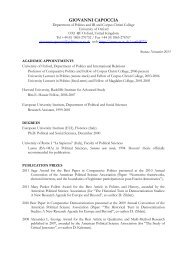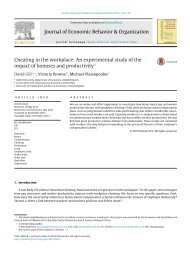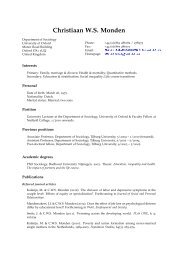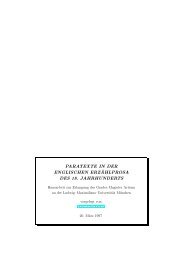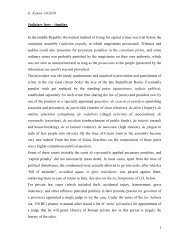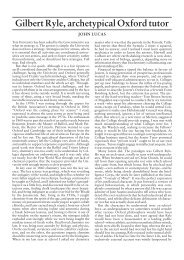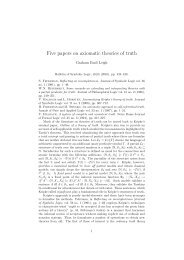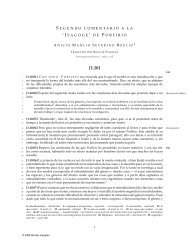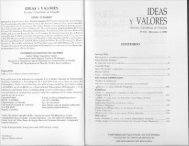Lexical Functional Grammar - Personal Pages Index
Lexical Functional Grammar - Personal Pages Index
Lexical Functional Grammar - Personal Pages Index
You also want an ePaper? Increase the reach of your titles
YUMPU automatically turns print PDFs into web optimized ePapers that Google loves.
In the rule shown in (39), the V and the V ′ node correspond to the same f-<br />
structure, as specified by the ↑=↓ annotation on the V node. The annotation<br />
on the NP node requires the f-structure ↓ corresponding to the NP to be the<br />
value of the OBJ value in the f-structure ↑ for the mother node.<br />
(39) V ′ −→ V<br />
↑= ↓<br />
NP<br />
(↑ OBJ) = ↓<br />
The rule in (39) licenses the following configuration:<br />
(40)<br />
V ′<br />
V NP<br />
[ ]<br />
OBJ [ ]<br />
We can use the same formal vocabulary in specifications of lexical entries.<br />
The lexical entry for the verb sneezed is shown in (41). It specifies that the<br />
c-structure category of sneezed is V, and also specifies constraints on the f-<br />
structure↑ ofthepreterminalVnodethatdominatestheterminalnodesneezed:<br />
(41) sneezed V (↑ PRED) = ‘SNEEZE〈SUBJ〉’<br />
(↑ TENSE) = PAST<br />
This lexical entry licenses the c-structure/f-structure configuration in (42).<br />
(42)<br />
V<br />
sneezed<br />
[ ]<br />
PRED ‘SNEEZE〈SUBJ〉’<br />
TENSE PAST<br />
In the examples above, expressions such as (↑ OBJ) refer to a particular<br />
f-structure, the value of the attribute OBJ in the f-structure ↑. It is also possible<br />
to refer to f-structures that are embedded within another f-structure at<br />
an arbitrary depth, by the use of functional uncertainty, where a regular<br />
expression (defined above, in the discussion of phrase structure rules) is used to<br />
characterize a path through an f-structure. The rule shown in (43) states that<br />
the NP daughter of IP bears the FOCUS role ((↑ FOCUS) = ↓) and also bears<br />
some grammatical function GF which may be embedded within any number of<br />
COMPs ((↑ COMP* GF) = ↓). Such a rule would play a role in the analysis of<br />
examples like (34), where the same phrase fills both the FOCUS and the SUBJ<br />
role.<br />
(43) IP −→ NP<br />
(↑ FOCUS) = ↓<br />
(↑ COMP* GF) = ↓<br />
I ′<br />
↑= ↓<br />
5 Syntax and semantics<br />
Several recent research strands in LFG have explored the relation of constituent<br />
and functional structure to other linguistic levels. Among these are the theory<br />
oftherelation between argumentstructureandsyntax, andthe“glue” approach<br />
to the interface between syntax and semantics.<br />
17



